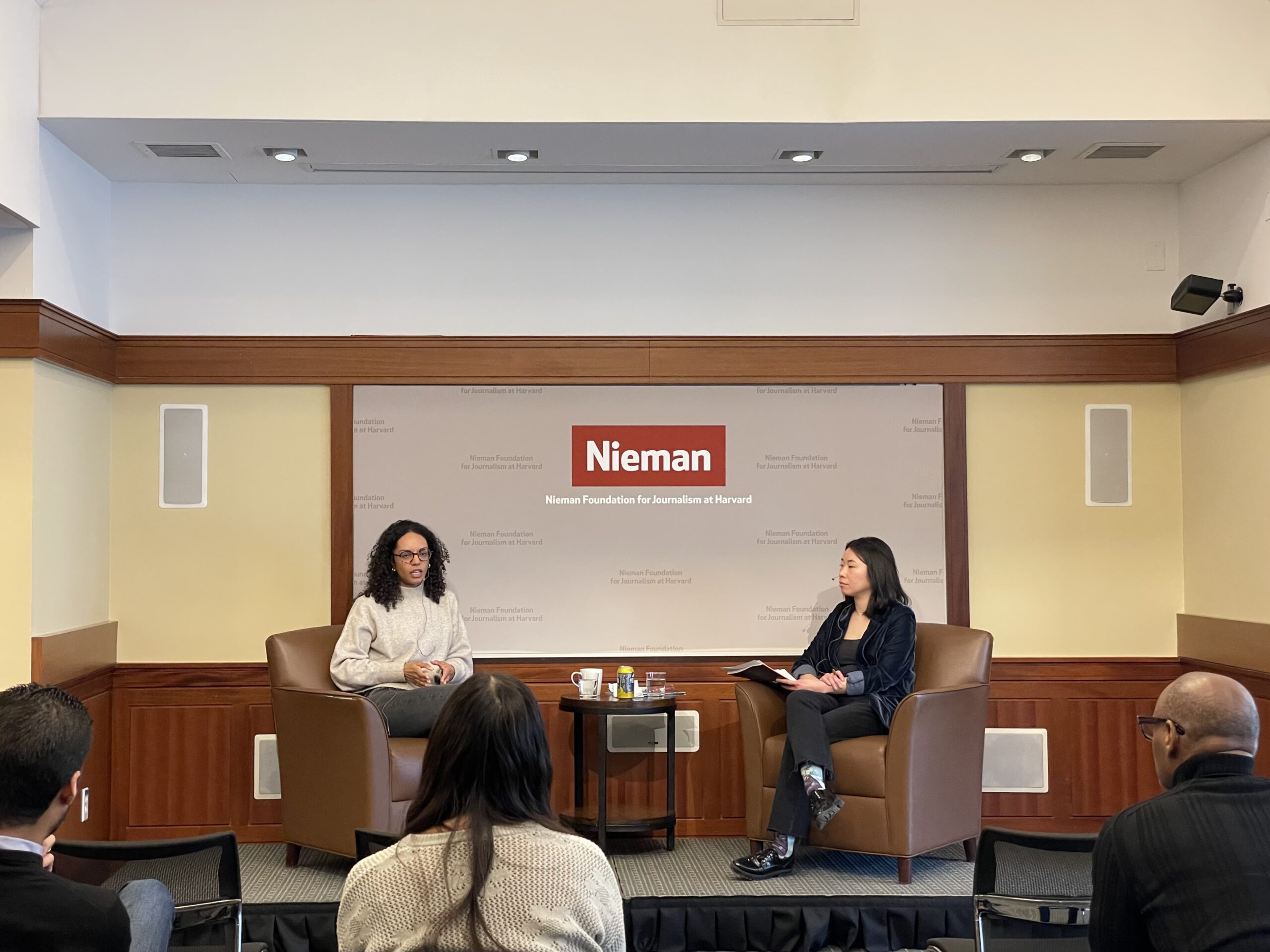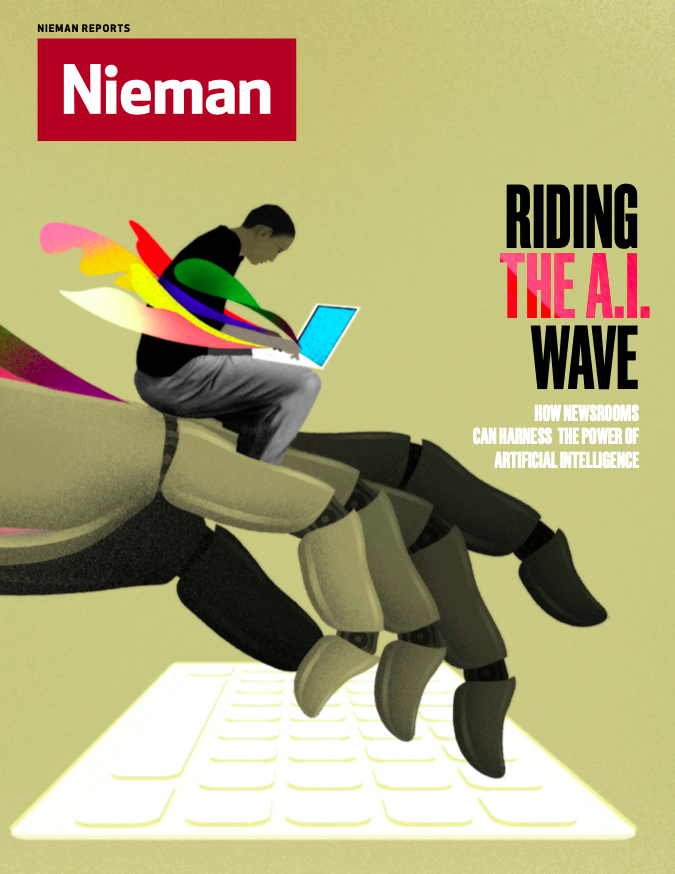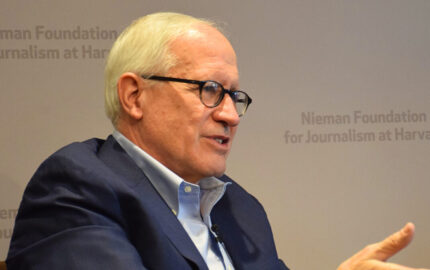In 2018, The Trump administration’s Zero Tolerance border policy separated over 5,000 children from their families, hundreds of whom have still not been reunited. Caitlin Dickerson, now a staff writer at The Atlantic, was one of the many reporters covering the family separations as they happened. But “despite the flurry of work that we produced to fill the void of information,” Dickerson wrote in her September 2022 investigation for the magazine, “we knew that the full truth about how our government had reached this point still eluded us.” Over the course of 18 months, 150 interviews, and thousands of pages of government documents, Dickerson sought to peel back the ins-and-outs of how the draconian policy came to be, resulting in the 30,000-word “Secret History of Family Separation” story for The Atlantic.
Previously, Dickerson spent nearly five years as a reporter at The New York Times and five years as a producer and reporter for NPR. She is currently writing a book for Random House about the systemic impact of deportation on American society and is a fellow at the Harvard Kennedy School’s Shorenstein Center.
Dickerson spoke to Nieman fellows in March about how the investigation came to be, the role of bureaucracy in the Zero Tolerance policy, why deterrence doesn’t work, and more. Edited excerpts:
On bureaucracy
I found myself rooting for bureaucracy and was surprised by it. It has about as bad a reputation as any concept can have. Bureaucracy equals bad equals wasted time and pushed papers. It conjures people who don’t want to get anything done.
That’s, in fact, the main issue the Trump administration had with bureaucracy and why they decided to, as much as possible, get rid of it.
I didn’t know how all this was set up. I set out to learn about it and discovered that bureaucracy shouldn’t have the reputation that it does — especially when you’re dealing with something as big as the United States government. These systems exist for a reason. They should have acted as safeguards in this case. They didn’t because they were kept out of the room.
As you move down in successive layers in the bureaucracy, the scope of work narrows, but the depth of knowledge and the depth of expertise should increase. In an ideal world, I learned, when a policy is being batted around, it starts at the bottom. It’s vetted by the people who have very, very granular knowledge of very few things.
Only once they’ve approved it is it elevated to people who think about more abstract, general notions. Does this align with our administration’s goals in general? What’s the messaging going to be like? How is the public going to react? What are the political implications? Only after it’s been vetted by people who have all this expertise does it reach the top. That didn’t happen in this case.
The reason that you and I both were rooting for bureaucracy is because you had people like Department of Homeland Security Secretary Kirstjen Nielsen making a decision about whether or not to proceed with this idea without being informed and briefed as she should have been.
That’s not to excuse anybody at any level of the bureaucracy. It’s just to say that it turns out that all of those layers and that perceived slowness is really, really important when it comes to debating a policy where the implications were this dramatic, significant, [and] lasting.
On sources’ responses to family separation
The one thing that I saw less frequently than other perspectives was “I feel responsible.” Put another way, what I heard most often was people trying to explain to me why this wasn’t their fault.
I was able to capitalize on that even when those conversations looked like people explaining to me how they weren’t at fault. In trying to explain their perspective, they said, “Yeah, I was sitting in the meeting.” “Did you say anything in the meeting?” “Oh, no. I didn’t say anything in the meeting because it wouldn’t be good for my career.” “OK, what about when they were still talking about the idea a few months later? Then did you say anything?” “Well, no, because it wasn’t a good idea to upset Stephen Miller.” Yes, a lot of people felt like they weren’t at fault, and they wanted to get that off their chest.
There [were] people who started off with me very apologetic, and there were even lots of tears throughout the story. Law enforcement people almost were in tears at the beginning of my reporting but then started being nervous right before publication. I can only assume because it became much more real — that this idea of challenging the Trump administration became much more real.
There was a lot of, I would say more than with other stories, people just expressing strong feelings and getting emotional, and sometimes have all kinds of different perspectives over the course of the two years of working on the story.
On the ProPublica audio inside a detention center
I think that more than anything, without a doubt, it was the audio that ProPublica obtained from inside of a detention center, of crying children, that made this story break through to the public. I say that with pain, because I have been writing about it for a long time and saying that it was real, including on the front page of The New York Times.
Those stories penetrated for some people, but there was just nothing like that audio. I don’t think that’s a coincidence at all whatsoever. In fact, it’s possible that the audio was even more powerful than video might have been. If you had video of people having their children taken away, that would’ve broken through. That didn’t exist because these detention centers were locked down. What the audio had going for it is that kids who are crying more or less all sound the same.
In this case, these kids were speaking another language, but there was something very raw and elemental and universally gripping about the sounds of the children crying and asking — begging — to be brought back together with their parents, for information about where their parents were, just for information about what was going on.
I started out working [at] NPR. I’ve always felt strongly about the power of the sound of the human voice. It just conveys something that no other medium can.
In this case, it was especially helpful because of the kind of othering effect of journalism that has to do with immigration … [and] immigrants in general. There was something very universal about the crying child that even Trump administration officials, who didn’t want to believe family separation was happening, couldn’t ignore.
The communications coming out of the Trump administration when this story first came to light were smart, slick. They sounded logically sound. They tricked a lot of people until the audio of those children cut through the noise and the euphemisms and the obfuscation and what was happening, and the stakes of it just became undeniably clear.
On why deterrence doesn’t work
You know who will tell you that [deterrence doesn’t work]? Border patrol agents. Not all of them. Some of them believe really strongly in this “gospel of deterrence,” but some of them have been around long enough to realize that they have seen these restrictions grow and shrink, and grow and shrink, and grow and shrink, and the one thing that is always true is that the border crossings will just increase.
[As] one person put it to me, the border is like the stock market. It [curves up and down], but it’s always going up. We see that. I’m sure you’ve noticed this too in the current coverage that obsesses over the Biden administration having broken the record for the number of border crossings.
These stories rarely acknowledge that before that, the Trump administration broke the record for border crossings, or that prior to that, the Obama administration did. The record is broken every time, but we have this short‑term memory for some reason.
From what was described to me in covering this story, the pressure and the fear around a backlash over the perception of being weak on the border, it just becomes overwhelmingly powerful. There’s this groupthink that sets in.
I’ve heard from sources in the Biden administration that now there’s more open discussion in meetings about, “Well, we know this isn’t going to work,” but the response is, “Well, what are some ideas that you have anyway?” That’s why the administration is debating re‑implementing family detention, which hasn’t worked since the Bush administration, but here we are. It doesn’t make logical sense.
Immigration issues can’t be solved in a four‑year term. Politicians think about success and deliverables at the end of their administration, which hopefully, in their mind, leads to reelection. If you can’t fix the issue, you just see both parties reverting to, “The damage being done to my reputation, how can I minimize that as much as possible?”
That’s why we keep going back to the Band‑Aid solutions, because it’s all about minimizing the damage and political blowback, as opposed to fixing things, because that would require taking a risk that could carry consequences and could lose reelection. It also may not, but that’s the fear.
On crafting the right lede
I started this story with a series of social workers who were having kids dropped in their laps and not knowing who they were or where they came from. These are experts on childhood trauma. They felt completely unequipped because of the level of devastation, disturbance, panic, and desperation that the kids they were taking care of were experiencing.
Throughout covering family separation, I was always moved by the perspectives of the social workers. Why is that? They had the hardest evidence that separations were taking place apart from the parents and the kids themselves who, clearly, people didn’t believe.
Then it’s the fact that what they do is trauma. What they do is deal with children who are in desperate situations, and then they felt completely unable to do their jobs and their organizations were totally upended by this experience. That’s just something that always stuck with me.
I did my first in‑depth interview with such a case worker when I spent, at The Times, a few months looking for the youngest child to have been separated, who was four months old at the time. I found him through his case worker.
I thought that everything she said, it was striking and moving. I was able to write a little essay about her and what it meant to be a case worker. I always figured that I would come back to the perspective of the case worker and start this story.
The reality is that this story, yes, it started in 2020 at The Atlantic, but it also started in 2017 for me, because as an investigative reporter, while I’m covering family separations, I know I’m going to come back to this. I knew I was going to do this piece, whether I stayed at The Times to do it or whether I did at The Atlantic. I had been stewing on all this for a long time.
I was also interested in coming back to the father who’s at the end of the lede now, Nazario, who is one of the first, if not the first, parent who I spoke to in‑depth, who was separated from his daughter at the time. You just don’t forget being on the phone with a parent and they’re begging you for help finding their daughter.
I was explaining to him who I was and what my role was, and trying to interview him about his child so that I could write a compelling story about their family. It was like my questions weren’t penetrating. He just came back to asking me again and again, “Do you know where she is? When do you think she might be able to come back? Do you think it’ll be a month or two months, or how many days are we talking here?” He couldn’t take in anything other than, “Where is my daughter? When do I get her?”
Of course, that stayed with me from the time of our initial interview. Then I called him back when I got started with this story. He was aghast that some parents, still to this day, haven’t been reunited with their kids. I was torn between whether to start with Nazario or whether to start with the case worker.
I was interviewing case workers but I wasn’t quite getting what I needed. Then finally I did get what I needed for a great lede. I called [my editor] up and said, “I really don’t know what to do because I think these are both the right leads to start,” and he just said, “How about both?”
That’s why I ended up splitting them, which is such an Atlantic thing. And it’s a magazine thing more than a newspaper thing, in that, when you’re writing for the newspaper, you have to pick a lede. You don’t get to play around with the limited space that we’ve all dealt with. I really loved doing that.




